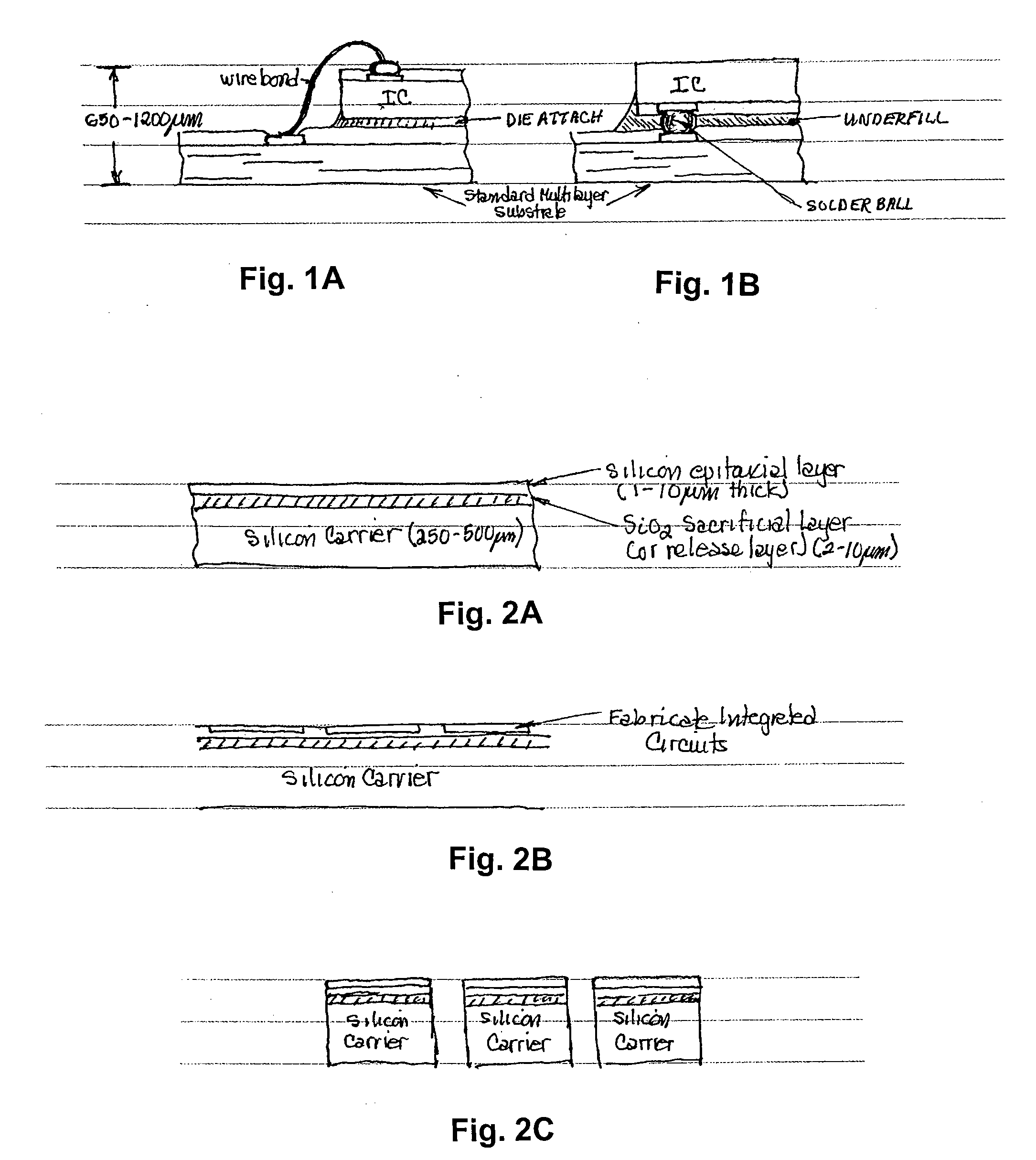Advanced Thin Flexible Microelectronic Assemblies and Methods for Making Same
a technology of microelectronic assemblies and thin strips, applied in the direction of basic electric elements, electrical equipment, semiconductor devices, etc., can solve the problems of microelectronic package and assembly to become smaller, not just in footprint, and dies to be thinned using a rather laborious grinding, polishing and etching process
- Summary
- Abstract
- Description
- Claims
- Application Information
AI Technical Summary
Benefits of technology
Problems solved by technology
Method used
Image
Examples
Embodiment Construction
[0025] The method of the invention is capable of producing thinned die down to a thickness of 1 μm and routinely at the 5-10 μm level. In this technique, as shown in FIG. 2A, the die must be fabricated on a silicon on isulator wafer or carrier.
[0026] As also shown in FIG. 2A, a silicon epitaxial (Epi) layer of, for example, 1-10 μm in thickness is grown or deposited on a sacrificial or release layer of, for example, a 2-10 μm layer of an adhesive or oxide or nitride. By way of example only, FIG. 2A illustrates a deposit / growth of silicon dioxide (SiO2) on a silicon wafer or carrier. The integrated circuit process then takes place in the standard manner with the creation of integrated circuits in the Epi layer (FIG. 2B). The sacrificial layer of, e.g., SiO2 (oxide layer) and the silicon carrier serve as a backside handle. Once the integrated circuit creation process is completed, the Epi can be bumped, as appropriate, while still attached to the oxide layer-carrier. The die can then...
PUM
 Login to View More
Login to View More Abstract
Description
Claims
Application Information
 Login to View More
Login to View More - R&D
- Intellectual Property
- Life Sciences
- Materials
- Tech Scout
- Unparalleled Data Quality
- Higher Quality Content
- 60% Fewer Hallucinations
Browse by: Latest US Patents, China's latest patents, Technical Efficacy Thesaurus, Application Domain, Technology Topic, Popular Technical Reports.
© 2025 PatSnap. All rights reserved.Legal|Privacy policy|Modern Slavery Act Transparency Statement|Sitemap|About US| Contact US: help@patsnap.com



